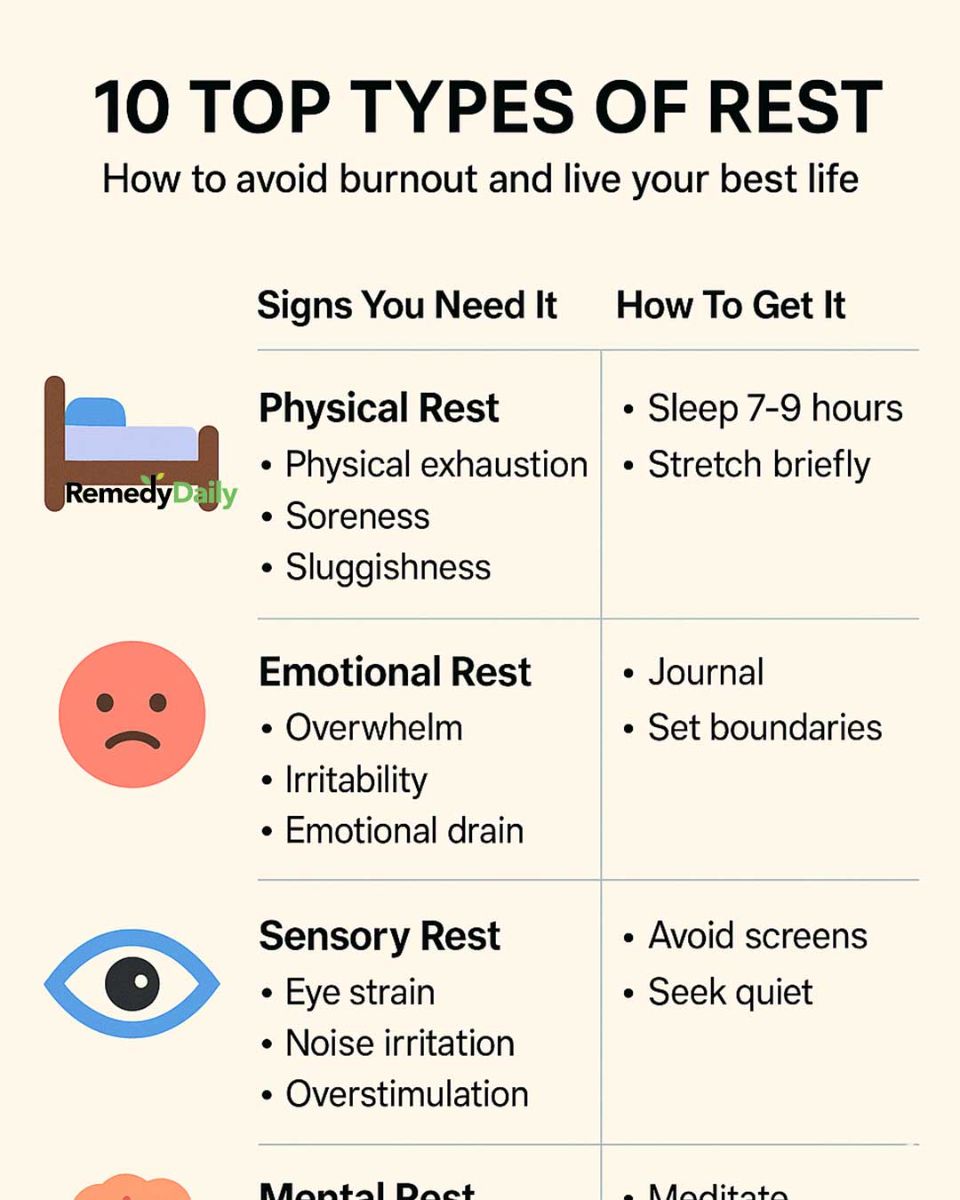In today’s fast-paced world, rest is often undervalued and overlooked. Yet, it is a crucial component of a healthy lifestyle, essential for maintaining physical health, mental clarity, and emotional balance. Rest is not merely the absence of activity; it is a proactive state of renewal, allowing the body and mind to repair and rejuvenate. Understanding the importance of rest can help us avoid burnout, enhance productivity, and ultimately lead a more fulfilling life. By recognizing the different types of rest, we can address specific needs and create a balanced approach to well-being.
Recognizing the Signs of Burnout
Burnout is a state of chronic stress that leads to physical and emotional exhaustion, cynicism, and feelings of reduced accomplishment. Common signs include fatigue, irritability, lack of motivation, and difficulty concentrating. Recognizing these symptoms early is crucial in preventing further decline. Burnout can affect anyone, from high-powered executives to stay-at-home parents. It is important to listen to your body and mind, acknowledging when you are overextended and in need of rest. By identifying these signs, you can take proactive steps to incorporate rest into your routine and prevent burnout.
1. Physical Rest: Rejuvenating the Body
Physical rest is essential for restoring the body’s energy levels and repairing tissues. It includes both passive rest, such as sleep and napping, and active rest, like gentle yoga or stretching. Quality sleep is the cornerstone of physical rest, allowing the body to undergo vital processes such as muscle growth, tissue repair, and hormone regulation. Ensuring you have a comfortable sleep environment and a consistent sleep schedule can enhance the quality of your rest. Additionally, incorporating short breaks during the day to stretch or take a walk can help rejuvenate the body and prevent fatigue.
2. Emotional Rest: Finding Peace Within
Emotional rest involves the ability to express your feelings freely and authentically. It means having a space where you can be yourself without the need to put on a facade. This type of rest allows you to release emotional burdens and find peace within. Practicing mindfulness, journaling, or talking to a trusted friend or therapist can provide emotional rest. It’s about creating boundaries and saying no to activities that drain your emotional energy. By prioritizing emotional rest, you can cultivate resilience and maintain emotional balance.
3. Sensory Rest: Escaping Overstimulation
In our technologically driven world, we are constantly bombarded with sensory input from screens, noise, and bright lights. Sensory rest is about reducing this overstimulation and giving your senses a break. This can be achieved by closing your eyes for a few minutes, spending time in a quiet environment, or engaging in activities that do not require intense focus, like listening to calming music. Taking regular breaks from screens and creating a serene environment can help alleviate sensory overload and improve overall well-being.
4. Mental Rest: Calming the Mind
